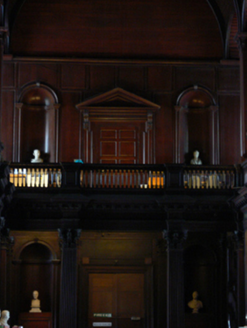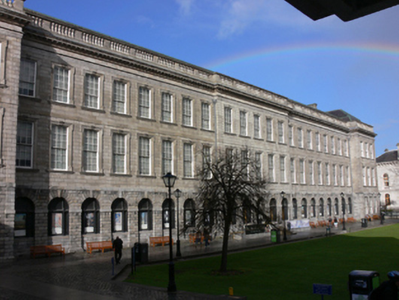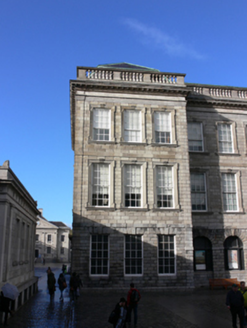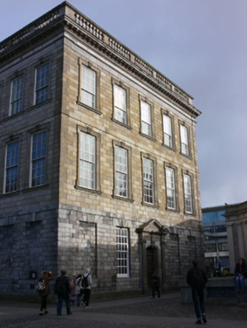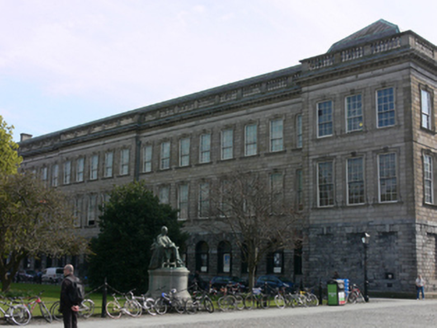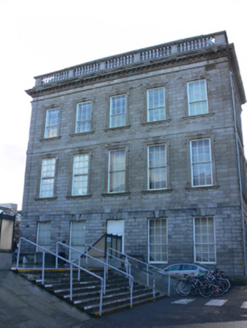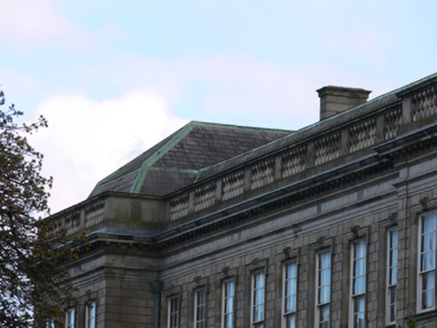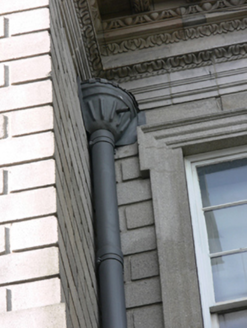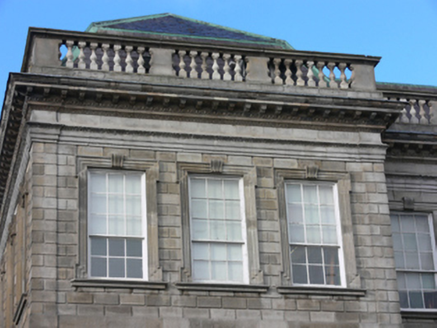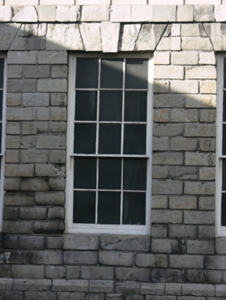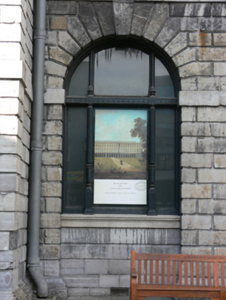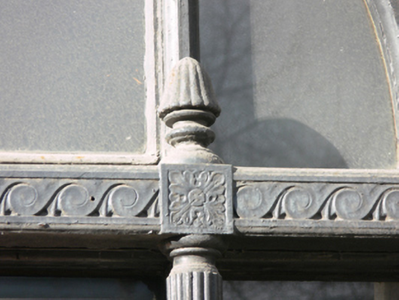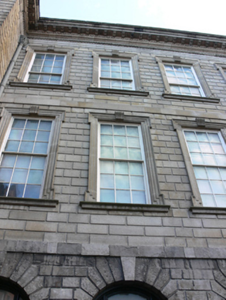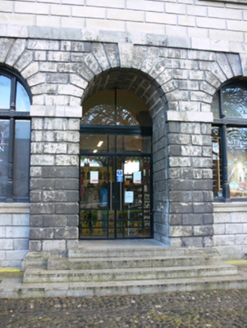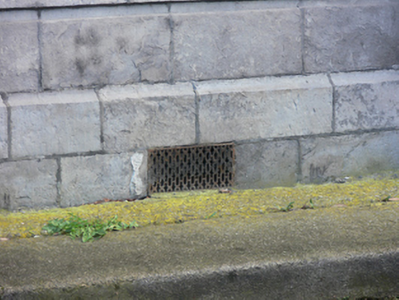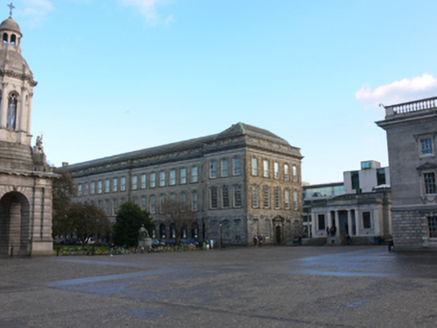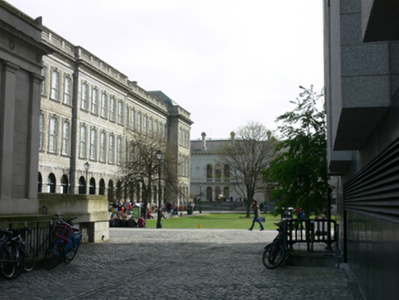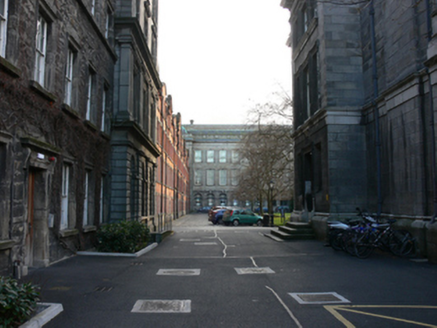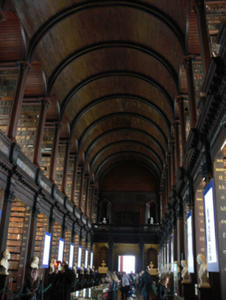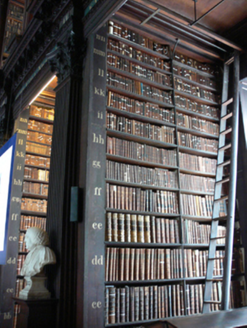Survey Data
Reg No
50020389
Rating
National
Categories of Special Interest
Architectural, Artistic, Historical, Social
Original Use
Library/archive
In Use As
Library/archive
Date
1710 - 1740
Coordinates
316149, 234023
Date Recorded
27/03/2015
Date Updated
--/--/--
Description
Detached twenty-seven-bay three-storey library, built 1712-1733, with three-bay projecting end bays to east and west and five-bay central breakfront to north and south elevations. Hipped slate roof, mansard roofs to end bays, behind limestone balustraded parapet, having ashlar granite chimneystacks and cast-iron rainwater goods. Projecting cornice with carved limestone brackets, carved Portland stone eaves course having egg-and-dart and rope motifs and foliate details. Ashlar granite and grey sandstone walls having granite platbands, pilaster quoins to end bays and breakfronts, calp limestone platband over rusticated calp limestone to ground floor, calp limestone plinth course with rectangular vents having iron grilles. Square-headed window openings with carved shouldered granite architraves having fluted keystone detail, carved sills and nine-over-six pane, nine-over-nine pane and twelve-over-twelve pane timber sliding sash windows to upper floors. Round-headed window openings with limestone impost course, keystones, sills, carved timber transoms having curvilinear detail and fluted and turned timber mullions. Square-headed blind widow openings to ground floor end bays. Pedimented doorcase to west elevation, fluted Ionic pilasters supporting entablature with pulvinated frieze, segmental-headed door opening having carved limestone architrave with fluted keystone, timber panelled door and overlight. Round-headed door openings having rusticated voussoirs to front and rear elevations, recent glazed doors, approached by splayed granite steps. Later triple-height interior, inserted 1859-1861, comprising double-height book stacks supporting barrel vaulted ceiling with carved timber ribs, with gallery having carved timber balustrade on fluted Corinthian pilasters, entablature blocks of oak, modillion cornice, timber panelled walls, round-headed niches and pedimented doorcases and architraves. Painted section names and white marble busts on pedestals. Square-headed door openings with timber architrave and pediments, and stucco work to ceiling to entrance. Stairs to west end, having decorative plasterwork.
Appraisal
The library was designed by Thomas Burgh, architect and military engineer. In plan a very simple design, a single galleried room over an open arcaded ground floor accessed by a stairs at one end, but resulting in one of the most impressive spaces in the city. The barrel vaulted ceiling by Deane & Woodward completed 1861, replacing the original flat ceiling, adds to the room’s scale and grandeur. The ground floor arcade was filled in by Thomas Drew 1889-92. The stone is a mixture of calp limestone and sandstone from the Darley quarries in Scrabo, Co Down. It was certainly larger than necessary to house Trinity’s collection of books. The stacks were not full when built. New storage was not required until the mid-nineteenth century. Richard Castle oversaw work in the stair hall c.1750, and the plasterwork is certainly of this date, however the stairs themselves may contain fabric from c.1720. The impressive timber joinery was carried out by John Sisson, and the gallery may well have been an addition to the original design, included in 1717 when the project budget was extended. Around the room, on pedestals before each of the stack end pilasters are marble busts. Fourteen were commissioned in the mid-1740s, by bequest of Claudius Gilbert. Eight, including figures of Shakespeare, Demosthenes, Cicero, Milton, Locke, and Pembroke are signed by Peter Scheemakers, while the others are probably by L.F. Roubiliac. The collection was expanded to include busts of Claudius Gilbert by Simon Vierpyl (1758), John Lawson by Patrick Cunningham (1759) and Patrick Delaney by John van Nost (c.1740). John Henry Foley and Thomas Kirk carved further busts in the nineteenth century.
